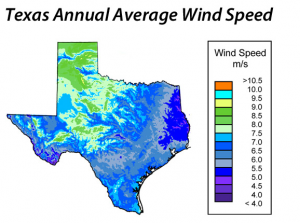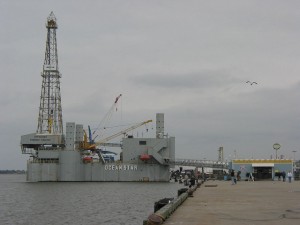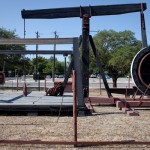Five Things You Should Know About Energy in Texas
Texas is the nation’s leader in oil, natural gas, and wind production. But what parts of the state are doing the heavy lifting when it comes to energy?
Last week, StateImpact Texas used data from the Railroad Commission of Texas and thewindpower.net to answer that question. We created maps that showed how much oil, natural gas, and wind energy each county produced between June 2012 and June 2013.
After digging even deeper into the data, we’ve come up with five key takeaways for what those maps mean, and why they’re important.
Pecos County is Texas’ All-Around Energy Leader
Out of Texas’ 254 counties, remote and arid Pecos County is the only one that ranks in the top 25 for oil, natural gas, and wind energy production. Few counties in the Trans-Pecos region are rich in fossil fuels, so Pecos County’s oil and natural gas operations (21st and 19th in the state, respectively) are unusual. Its wind production though is right in line with other West Texas counties — it clocks in as the state’s fifth-best.
The Hill Country: A (Beautiful) Energy Void
One of the most consistent trends among all three maps is the big, white, splotch that’s due west of Austin. That’s the Texas Hill Country, where you can see some of the state’s most breath taking sights, but little in the way of wind turbines or pumpjacks. The Hill Country’s topography isn’t conducive to wind production or drilling, but at least it’s easy on the eyes and lends itself to a thriving tube-based economy.
Go West for Wind
The vast majority of Texas’ wind production comes from the western portion of the state, where miles of flat landscape and record wind speeds keep the turbines spinning (albeit not always during peak periods). West Texas wind dominance could eventually be challenged, depending on the development of offshore wind along the Gulf Coast. If the cost of technology becomes economically feasible there, then offshore wind farms could start taking advantage of the Gulf’s immense wind capacity.
A Tale of Two Shales
Two Texas shale plays are experiencing similar fossil fuel booms, though they emphasize different resources. The Eagle Ford Shale in South Texas and Barnett Shale in North Texas are both producing tremendous amounts of oil and natural gas. But the maps show that the Eagle Ford has been more prolific in terms of oil, whereas the Barnett has led Texas in natural gas. The only other region that rivals either one is the Permian Basin, which contains 12 of Texas’ top 25 oil-producing counties for 2012.
The Coast with the Most
For all the attention paid to fracking and how it’s created the new oil and gas boom, conventional drilling is still producing a consistent supply of oil along the Texas Gulf Coast.
Every coastal county produced at least some oil and natural gas, even though its two top-producing counties last year weren’t among the state’s most prolific (Refugio County was 38th in oil, while Jefferson County was 36th in natural gas). Depending on what happens with offshore wind development, the Gulf Coast could become Texas’ all-around energy leader in the not-so-distant future.




